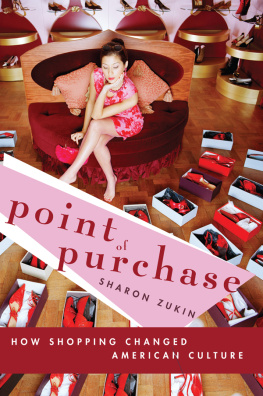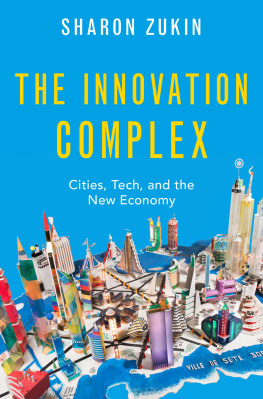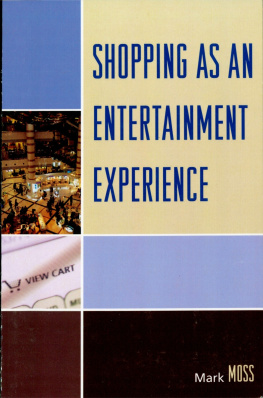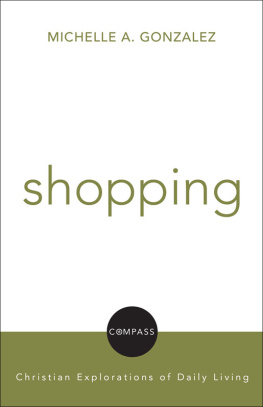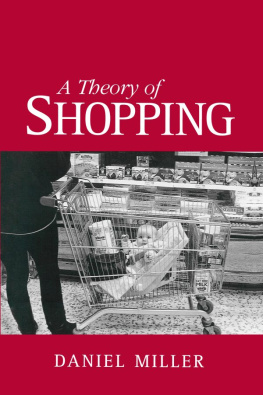Published in 2005 by
Routledge
711 Third Avenue
New York, NY 10017
Published in Great Britain by
Routledge
2 Park Square, Milton Park
Abingdon, Oxon OX14 4RN
Copyright 2004, 2005 by Sharon Zukin
First Routledge hardback edition, 2004
First Routledge paperback edition, 2005
Routledge is an imprint of the Taylor & Francis Group.
All rights reserved. No part of this book may be printed or utilized in any form or by any electronic, mechanical or other means, now know or hereafter invented, including photocopying and recording, or any other information storage or retrieval system, without permission in writing from the publisher.
Library of Congress Cataloging-in-Publication Data
Zukin, Sharon.
Point of purchase: how shopping changed American culture / Sharon Zukin.
p. cm.
ISBN 0-415-94597-6 (hbk) ISBN 0-415-95043-0 (pbk)
Includes bibliographical references and index.
1. Consumption (Economics)Social aspectsUnited States. 2. Shopping
Social aspectsUnited StatesHistory. 3. Consumer behaviorUnited StatesHistory.
I. Title.
HC110.C6Z84 2003
306.30973dc21
2003009421
prologue
what shopping is
Take a day off. Go shopping.
Mayor Rudolph Giuliani, asking New Yorkers not to go to their jobs in the Wall Street area on the day after terrorists destroyed the World Trade Center, September 11, 2001
When terrorists struck the World Trade Center, in Lower Manhattan, on September 11, 2001, Mayor Rudolph Giuliani rapidly took command. With three hundred thousand stockbrokers, office workers, security guards, and food vendors seeking refuge in other parts of the city, emergency workers painstakingly began to clear the debris. Thousands had died, and many police officers and fire fighters also lost their lives when the towers came down. Not only the downtown financial district but most of the cityand the nation as a wholewas emotionally drained. But the mayor tried to establish a sense of normalcy. New Yorkers could find comfort, he said, if they thought of this terrible time as a day off from work. Watching the mayor on TV, I expected him to counsel us to stay at home with our families, to relax and play a game of softball, or to pray. Instead, he urged us to go shopping.
The underground shopping mall at the World Trade Center lay in ruins: plate-glass windows shattered at The Gap, lights darkened at Borders Books, bottles of Tylenol and bars of Dial soap buried under rubble at Duane Reade drugs. Farmers from upstate New York, who had brought the tart, green apples of early fall to the regional Greenmarket at Church and Liberty Streets, which was held every Tuesday and Thursday in the Twin Towers shadow, ran for their lives.
But uptown, at Thirty-fourth Street, shoppers were just getting ready to enter Macys, where they would hunt for bargains between the back-to-school sales and the weeklong promotions that honor Columbus Day. On the East Side, Bloomingdales was opening its doors to customers who were looking for the latest fashions from Ralph Lauren, Calvin Klein, and DKNY. Over on Madison Avenue, black-clad sales clerks were dusting off showcases of bright-colored silk scarves, sleek cashmere sweaters, and solid gold watches at the same designers flagship stores, as well as at the boutiques of Herms, Prada, Max Mara, and Bulgari. Meanwhile, out in the suburbs of Long Island and New Jersey, shoppers were driving into mammoth parking lots surrounding the big box stores; alighting from their cars, they would push giant metal carts into Wal-Mart, Kmart, and Home Depot, and stream through the broad, familiar aisles.
It was all, in a way, very normal. You see people shopping every day. Yet Mayor Giuliani understood just how closely shopping is keyed to our expectations of normalcyand also defines the spiritual territory of our lives.
Think about it. Do you ever daydream of finding the perfect pair of pants? How much time do you spend doing research before buying a new computer? Can you remember the first time you went shopping for yourselfprobably with your older sister? For nearly all of us, shopping shapes our daily paths through space and time; major purchasesa computer, a car, a housemark ritual stages in our lives. We separate ourselves from others by deciding where to shop and what to buyyet in no other activity are we so immediately in the presence of others. In normal and abnormal times, shopping is both a tedious chore and a moral preoccupation. Love it or hate it, shopping is our life.
But everyone has their own approach to shopping.
When my friend Kathy has nothing to do on a Saturday afternoon, she calls her mom and suggests that they go shopping. They meet for lunch, and then spend the afternoon going from store to store. They browse through the racks, fingering the silk and denim and microfiber, trying on a sweater or a pair of pants, especially if its on sale, and making mental notes about items that might be useful at another time, or for one of their friends, or for Kathys father.
My husband laughs at us, Kathy says, with a chuckle of her own. He says were vapid.
Paul, Kathys husband, hates to go to stores. He gets bored after twenty minutes of pawing through sweaters heaped on counters, he can never spot a salesperson, and he swears he never finds khakis in his size among the choices at The Gap. When Paul logs onto the Internet, however, hes a happy shopper. He spends hours checking the prices of computers and comparing new models, and he enters his measurements at Lands End with the greatest satisfaction.
And then theres me. Unlike Kathy, I dont consider myself a shopper. And unlike Paul, I havent found happiness shopping on the Internet. But at some point during the 1990s, it became clear that for me, too, shopping was taking over my world.
It wasnt that I was shopping more, myself. Except for the birth of my daughter, in 1990, which temporarily bonded me to the 100 percent-cotton infants outfits at Macys and the plastic playthings at Toys R Us, my shopping habits have remained unchanged for years.

